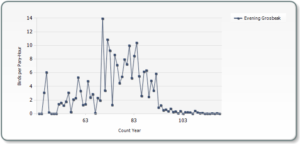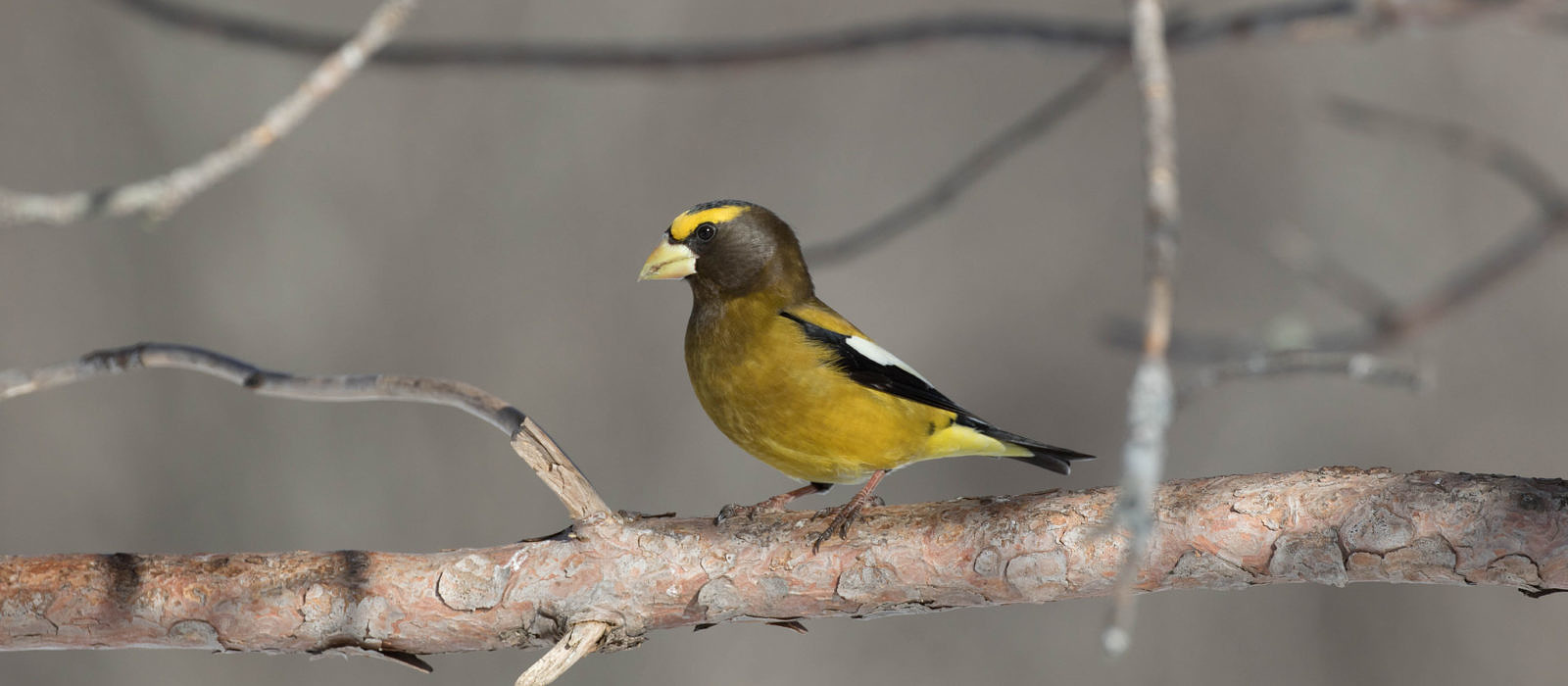The Christmas Bird Count (CBC) was originally conceived as a conservation-minded alternative to a 19th-century tradition known as the Christmas “Side Hunt.” Now it’s the longest-running citizen science project — and largest biological survey — in the world, with thousands of participants counting millions of birds all across the Americas.

The Christmas Bird Count in Keene dates back all the way to 1900 — one of the oldest in the country. The CBC for Peterborough, Hancock, and surrounding towns celebrated its 45th year in 2018. (photo © Ted Leach)
There are two “count circles” here in the Monadnock Region, one centered on Keene and another in Peterborough, Hancock, and surrounding towns.
Early on the morning of December 15, five of us squeezed into a car to participate in the Peterborough CBC. “Team Dublin” comprised Francie Von Mertens, David Baum, Bill Preston, Tom Warren, and myself, and we covered the southwestern part of the Peterborough-area count circle. We’ve been getting together for this ritualized birding excursion for about 20 years. I look forward to seeing old friends every year, and of course the birds.
The beauty of a long-term study is that there is always something of interest to compare to years past, even if the birding is slow. This year, the birding was slow – very slow. Wild food was scarce, with several species of tree and shrub producing a poor crop. Acorns, a staple of Blue Jays, were in short supply. If you have trouble finding acorns in the winter, you will have trouble finding jays, and the jay count was near record low. Crab apples seemed to have a good season, but so did gray squirrels, which got to them first. Most years we can find a few fruiting apple trees, attended by robins and waxwings. This year, there were no apples, no robins, and no waxwings. The below average temperatures in November may also have caused the birds to push birds further south than normal.

The number of Evening Grosbeak observations per party-hour across all New Hampshire Christmas Bird Count circles, from 1900 (Count Year 1) to 2017 (Count Year 118). (data & graph © Audubon CBC)
In a nutshell, our birds were elsewhere. But this story plays out across the continent. Bird populations fluctuate year to year no matter where you live. While we lost most of our birds to other parts of the country, there was one notable exception. Birders with a good memory may remember the huge flocks of Evening Grosbeaks that descended on feeders in the 1970s and 1980s. You would not likely forget, because they were expensive guests: a large flock could empty a well-stocked feeding station in a day. But in the late 1980s, they disappeared from the state, perhaps as a result of forest management practices that affected their food supply.
Evening Grosbeaks are now a rarity for the Peterborough CBC, but this year Team Dublin recorded seven and the combined total for the count circle was 50. So while we lost our robins, bluebirds, and jays, someone else lost their grosbeaks. And you couldn’t ask for a better bird. They add a touch of the tropics to brighten even the dullest winter day!
Contact Us
For more information or to be added to the email list for next year’s Christmas Bird Count, contact Eric Masterson at (603) 525-3394 or by email.


